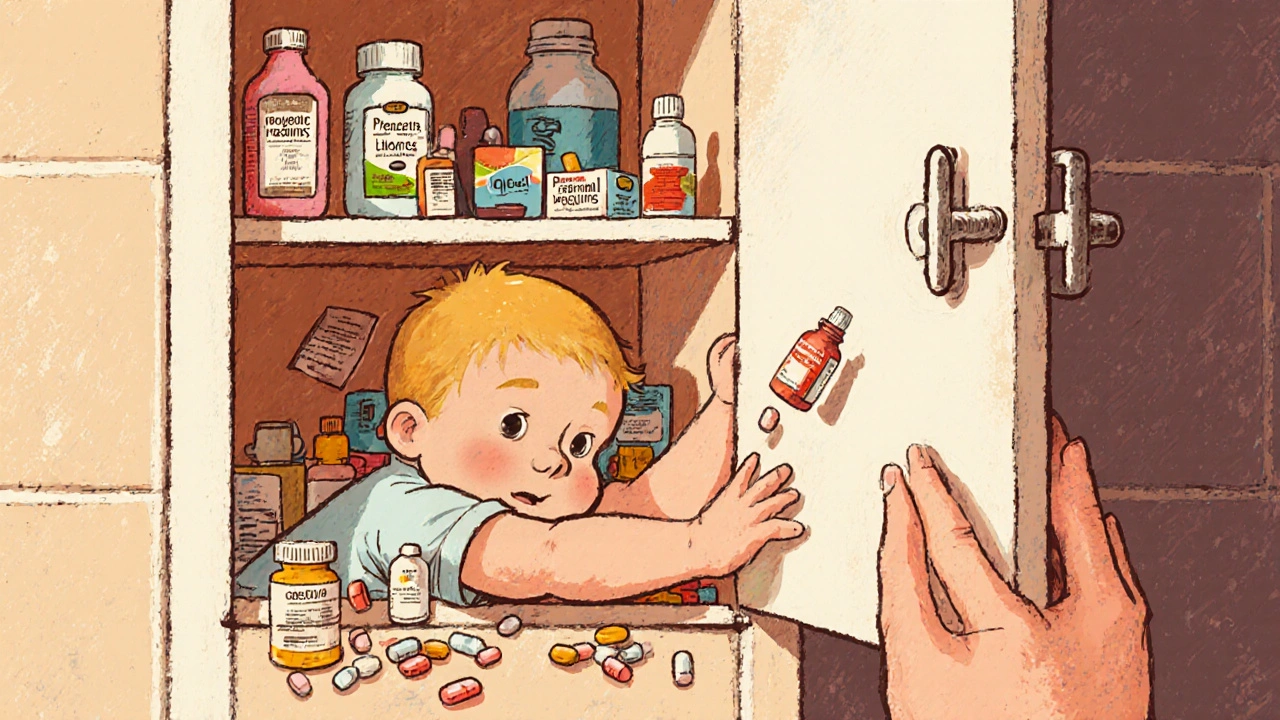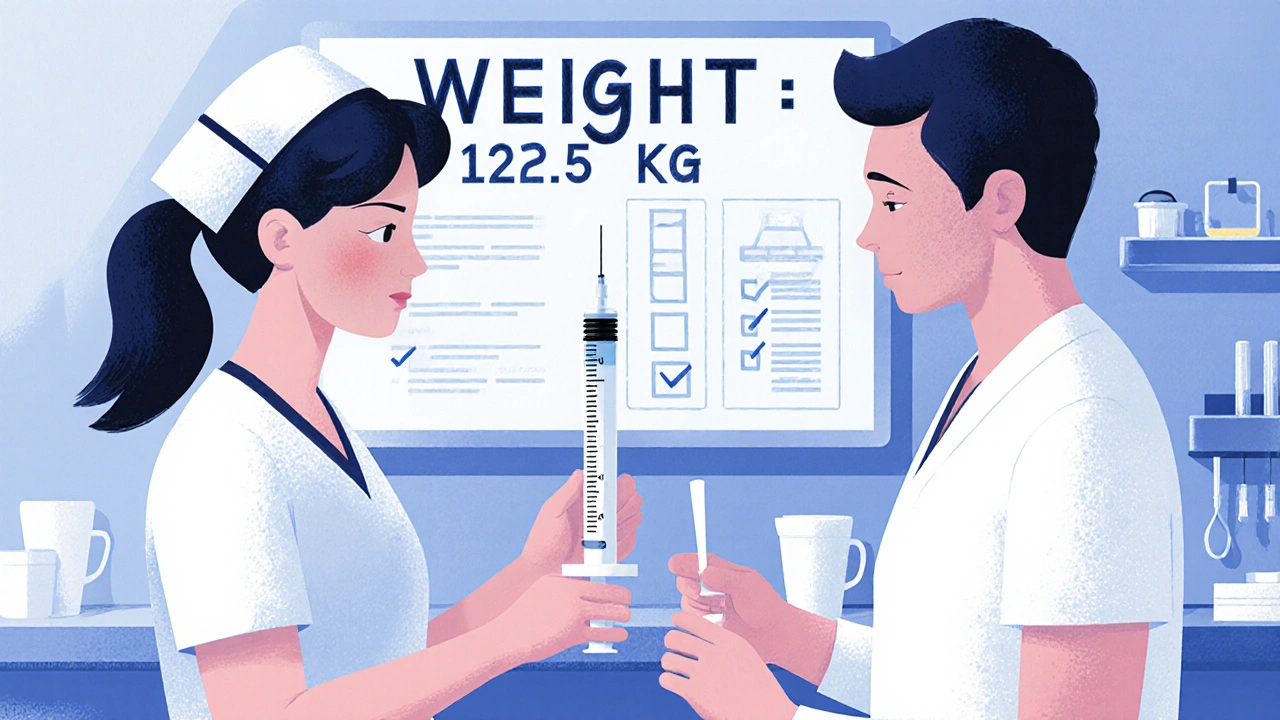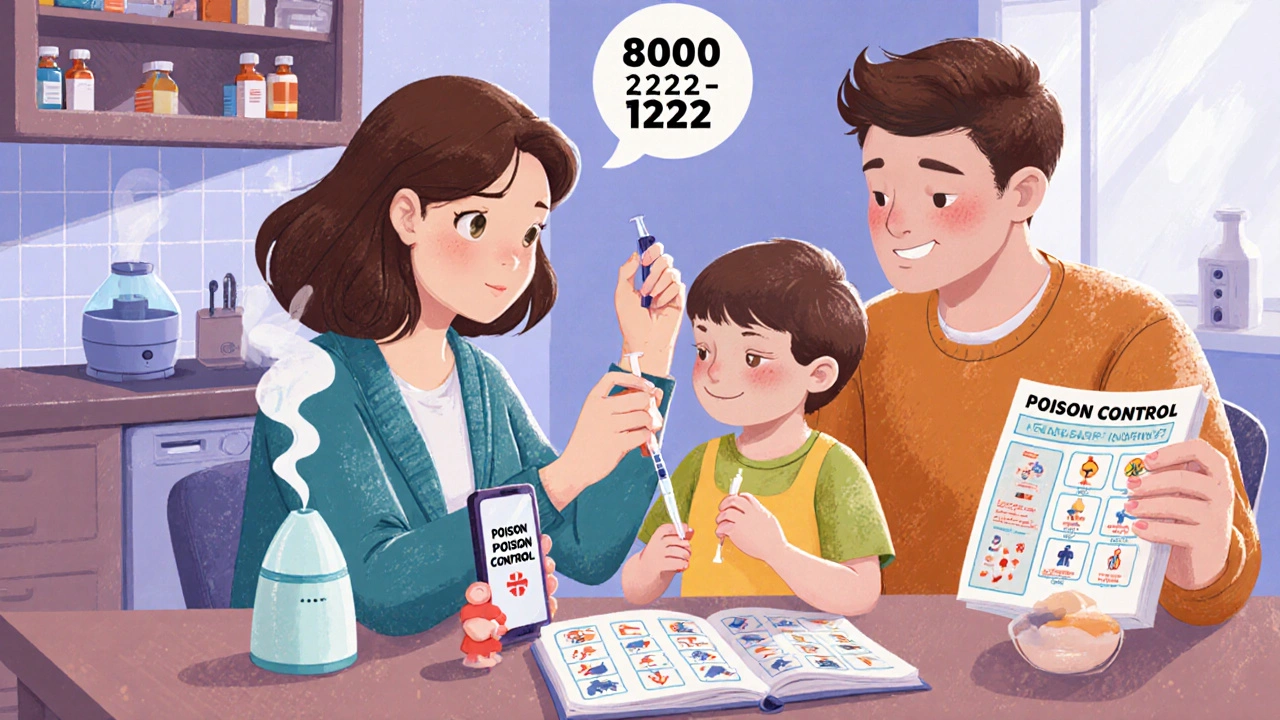Pediatric Medication Safety: Special Considerations for Children

Pediatric Medication Dose Calculator
Accurate Medication Dosage for Children
Accurate dosing is critical for children's safety. This tool helps calculate the correct liquid medication amount based on your child's weight and the medicine concentration.
Every year, 50,000 children under age 5 end up in emergency rooms because they got into medicine they weren’t supposed to. Many of these cases aren’t accidents-they’re preventable mistakes. Children aren’t just small adults. Their bodies process drugs differently, they can’t tell you when something feels wrong, and even a tiny amount of the wrong medicine can be deadly. Pediatric medication safety isn’t just about giving the right dose-it’s about understanding how a child’s body works, how mistakes happen, and how to stop them before they do.
Why Kids Are at Higher Risk
Children’s bodies are still growing. Their kidneys and liver, which break down and remove medicines, aren’t fully developed. A dose that’s safe for a teenager might be toxic for a baby. Weight matters more than age. An infant weighing 3 kilograms needs a completely different amount than a 50-kilogram preteen. That’s a 16-fold difference in body weight within the pediatric range alone. One wrong decimal point, one misread unit, and the result can be catastrophic.Doctors and nurses often work in adult hospitals where pediatric cases are rare. A 2019 study found that hospitals with fewer than 100 pediatric patients a year have over three times the rate of medication errors compared to children’s hospitals. Why? Because staff aren’t used to thinking in kilograms, not pounds. They aren’t used to double-checking every liquid dose. They aren’t used to the fact that a teaspoon isn’t the same as a milliliter.
And then there’s the communication gap. Babies can’t say, “My stomach hurts.” Toddlers can’t explain they took the wrong pill. A child who swallows a single adult painkiller might not show symptoms for hours. By then, it’s too late.
The Most Common Mistakes
Some errors are shockingly simple-and deadly.- Using a teaspoon instead of a milliliter: 1 teaspoon = 5 milliliters. Give a child 5 mL of medicine thinking it’s 1 teaspoon, and you’ve given them five times the intended dose.
- Using a tablespoon instead of a teaspoon: That’s a threefold overdose.
- Confusing pounds and kilograms: A child weighing 10 kg is 22 pounds. If you calculate the dose based on 10 pounds, you give less than half the right amount. If you mistake 10 kg for 10 pounds, you give double.
- Removing pills from child-resistant containers: Parents often do this to make it easier to give medicine. But children can open those bottles in under 30 seconds if the cap isn’t fully locked.
Even common items like prenatal vitamins, eye drops, or diaper rash cream can be fatal if swallowed. One study found that 20% of pediatric poisonings involve these “non-prescription” products.
What Hospitals Are Doing Right
Leading children’s hospitals have made major changes to cut errors. The American Academy of Pediatrics laid out 15 key steps in 2018. Most of the top hospitals now follow at least 12 of them.- Kilograms only: No pounds allowed. All weights are recorded and used in kilograms. Electronic systems block dosing if the weight is entered in pounds.
- Standardized concentrations: High-risk medicines like morphine or insulin are now made in only one strength for kids-no more confusion between different concentrations.
- Two-person checks: For high-alert drugs, two trained staff members independently verify the dose before giving it.
- Distraction-free zones: Medication prep areas are quiet and free from interruptions. No phones, no chatter-just the medicine, the child, and the checklist.
- Milliliter-only dosing: Liquid medicines are labeled and dispensed only in milliliters. No teaspoons, no tablespoons.
These changes aren’t theoretical. Facilities that implemented them saw an 85% drop in dosing errors. The CDC’s PROTECT Initiative and The Joint Commission now require these practices as national standards.

What Parents and Caregivers Need to Know
Most pediatric poisonings happen at home. And most of those happen because the medicine was within reach.- Store everything up and away: Not on the counter. Not in a purse. Not in a bedside drawer. Use high cabinets with locks. The CDC says 75% of poisonings happen in places parents thought were “safe.”
- Never call medicine candy: Saying “This tastes like candy” or “This is yummy” is a direct invitation for a child to take more. It’s responsible for 15% of accidental ingestions.
- Use child-resistant caps correctly: Push down and twist until you hear a click. If you’re not sure, test it. A child can open a half-closed cap in seconds.
- Don’t use OTC cough and cold medicine for kids under 6: They don’t work-and they’re dangerous. The FDA and AAP both say no. Use saline drops and a humidifier instead.
- Give medicine correctly: Aim the liquid toward the back of the cheek, not the tongue. This reduces choking and ensures the full dose is swallowed.
And if you’re unsure about the dose? Call poison control. Always. Don’t wait for symptoms. The number is 800-222-1222. Program it into your phone. Save it on your fridge. Teach older kids what it is.
Labeling and Packaging Matter
Look at your child’s medicine bottle. Is the dose written in milliliters? Is there a dosing syringe included? If not, ask for one. Many pharmacies still hand out cups or spoons. That’s outdated-and risky.The FDA now requires new pediatric drugs to come in standardized concentrations. That’s a big win. But many older medicines still have multiple strengths. Always check the label. Compare it to the prescription. If the numbers don’t match, ask the pharmacist to explain why.
Studies show that pictogram-based instructions-simple pictures showing when and how to give medicine-improve correct dosing by 47% in families with low health literacy. Ask your pharmacist for these. They’re free.

Teach-Back Is Your Best Tool
When a doctor or nurse gives you instructions, don’t just nod and say “Got it.” Say: “Can you show me how to give it?” Then, repeat the instructions back in your own words. “So, I give 2.5 mL twice a day, after breakfast and dinner, with the syringe that came with the bottle?”This technique, called “teach-back,” reduces medication errors by 35%. It’s not about doubting the provider-it’s about making sure you understand. And if you’re still unsure? Ask again. No one will think less of you.
What’s Next?
The future of pediatric medication safety is about standardization. The FDA is pushing manufacturers to make all pediatric medicines in the same concentration. That means no more confusion between 1 mg/mL and 5 mg/mL versions of the same drug. It’s already happening with insulin and antibiotics. It’s coming for everything else.And it’s not just hospitals. More pharmacies are now offering pre-filled syringes for home use. More pediatricians are using digital tools that auto-calculate doses based on weight. More public health campaigns are teaching parents that medicine is not a toy.
The goal isn’t perfection. It’s prevention. One less child in the ER. One less family losing sleep wondering if they gave the wrong dose. One less mistake that could have been avoided.
Why can’t I use a kitchen spoon to give my child medicine?
Kitchen spoons vary in size. A teaspoon from your drawer might hold 4 mL or 7 mL-there’s no standard. A dosing syringe or cup marked in milliliters is accurate. Giving a child 5 mL thinking it’s 1 teaspoon (which equals 5 mL) is fine-but if you use a spoon that holds 7 mL, you’ve given 40% too much. That’s dangerous.
Is it safe to crush pills for my child?
Only if the pharmacist or doctor says it’s okay. Some pills are designed to release slowly. Crushing them can make the medicine act too fast or become toxic. Others are coated to protect the stomach or taste bad. Crushing ruins that. Always ask before crushing or mixing medicine with food.
What should I do if my child swallows medicine they weren’t supposed to?
Call poison control immediately at 800-222-1222. Don’t wait for symptoms. Don’t try to make them vomit. Have the medicine container ready when you call. Tell them the name of the medicine, how much was taken, and when. Even if your child seems fine, some drugs take hours to show effects.
Why are weight-based doses so important?
Children’s bodies are smaller and still developing. Their organs process medicine differently than adults’. A dose based on weight ensures they get the right amount for their size. A 10 kg baby needs far less than a 40 kg child. Using age alone leads to under- or overdosing. That’s why hospitals require exact weight in kilograms before giving any medicine.
Can I use leftover medicine for my child’s next illness?
No. Medicine expires. The condition might be different. The dose might be wrong for their current weight. Even if it’s the same drug, giving old medicine without a new prescription is risky. Always check with your doctor or pharmacist before reusing any prescription.
Final Thoughts
Pediatric medication safety isn’t just a hospital issue. It’s a family issue. It’s a pharmacy issue. It’s a public health issue. The data is clear: mistakes happen because we treat children like small adults. We don’t. Their bodies are different. Their risks are different. Their safety needs different rules.Start with one change: always measure in milliliters. Always store medicine out of sight. Always call poison control if you’re unsure. These aren’t just tips-they’re lifesavers.